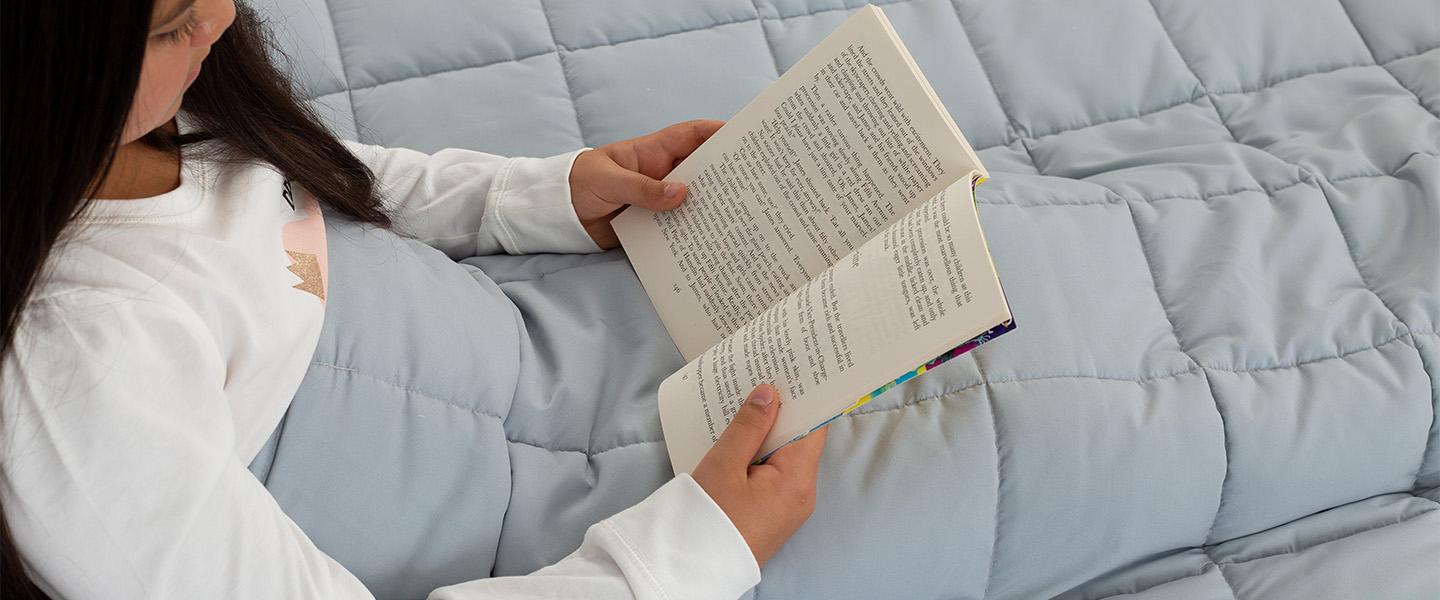How Heavy Should a Weighted Blanket Be?
If you are looking for a way to relax or improve your sleep, you may have contemplated buying a weighted blanket. With many benefits, they are growing in popularity and have helped countless people across the world with chronic conditions and sleep disorders.
Anyone looking to buy weighted blankets might have a few questions: How heavy should a weighted blanket be? What conditions will benefit from the use of a weighted blanket? Or what is a weighted blanket, and how does it work?
This post will answer all the important questions you have so you know the ideal weighted blanket size, weight, and material for you.
What is a weighted blanket?
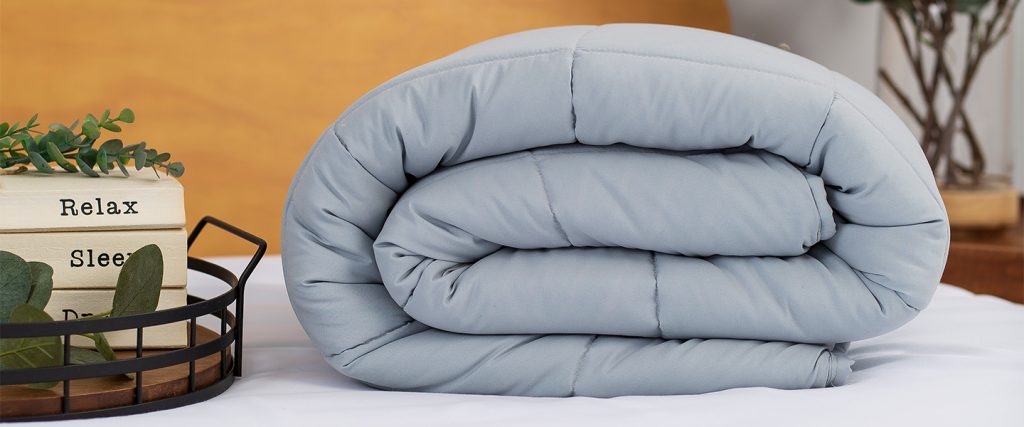
A weighted blanket makes use of specially stitched compartments that help to evenly spread the blanket's filler, usually plastic poly pellets or microbeads made of glass. The filler helps to add weight to the blanket that applies even pressure across the user's body.
The deep touch pressure applied by the blanket is used to help people with sleep disorders or other conditions to relax, focus, or fall asleep more easily.
Weighted blankets can be used to help you get to sleep or to relax in the home draped over the legs or shoulders. How you use your weighted blanket will depend on the benefits you are looking to get from it.
What is deep pressure therapy?
The human body has eight sensory systems from which it can receive information depending on the person. Senses the body can process include the following:
- Sound
- Sight
- Smell
- Taste
- Touch
- Movement
- Muscular and joint
- Internal physiological sensors
The central nervous system then processes this information. If the central nervous system struggles to process sensory information, this can be seen in social, emotional, language, or motor difficulties.
Studies suggest that deep pressure therapy has calming effects on adults and children. This is why hugs, strokes, squeezing, swaddling, and compression are successful techniques for specific conditions.
Three systems make up the Autonomic Nervous System: the parasympathetic, sympathetic, and enteric (gut) systems.
The parasympathetic system regulates involuntary functions such as the stimulation of the digestive tract, blood pressure, and heart rate.
The sympathetic system is more commonly associated with anxiety, stress, PTSD, and other similar conditions. This is because this system regulates the "fight or flight" response that humans experience in certain situations.
Deep touch pressure and stimulation are known to release serotonin and dopamine, increasing endorphin levels and helping to regulate mood and brain functions. This levels out the negative effects of external stimuli such as stress and anxiety.
The most famous study exploring the positive effects of deep pressure stimulation was carried out by Dr Anna Jean Ayres, who developed a hug machine as a form of providing deep touch pressure.
The calming effects have been shown to help people with an autism spectrum disorder, ADHD, people with sleep disorders, and mental health conditions. Benefits of deep pressure stimulation include:
- Reduced levels of anxiety or stress
- Increased focus and attention
- Improved quality of sleep
- Better coordination
- Increased balance caused by an improvement in proprioceptive processing
- An improvement in spatial awareness
How heavy should a weighted blanket be?
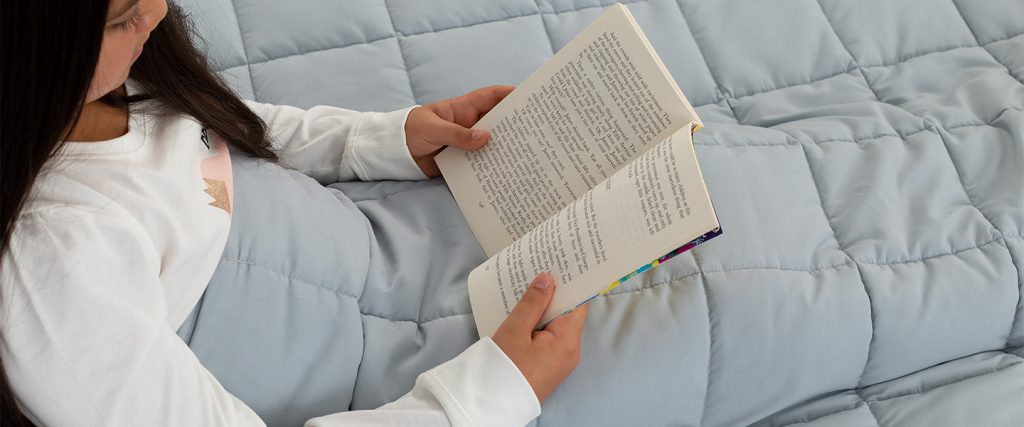
Now that you know a little more about what a weighted blanket is and the benefits it can provide, you might want to learn more about how you go about buying the perfect weighted blanket for you. So how much do weighted blankets weigh?
Buying products online offers an incredible range of benefits, such as the convenience of having them delivered straight to your door and the ability to find great deals. One drawback is that you can't test out beforehand. Because of this, understanding the product and finding out the best way to buy a weighted blanket to suit your needs is essential.
So, how heavy should a weighted blanket be? This is probably the most commonly asked question regarding weighted blankets and one of the most important. If you select a blanket that is too light, you won't enjoy the benefits, too heavy, and you won't be comfortable.
Generally speaking, weighted blankets should weigh roughly 10% of your body weight. Some weighted blanket users might feel more comfortable slightly under or above, but this weight is a great starting point.
Is there a weighted blanket weight limit?
Most blankets will go from around 4kg up to about 7.5kg. Blankets over 15kg could cause issues with your circulation or heart rate. You shouldn't exceed this weight, no matter your weight or if you intend to share the blanket.
A blanket that is too heavy for you will be uncomfortable, and you will not enjoy the benefits that are possible. It can also cause your body temperature to rise, make you feel restricted, and apply too much pressure on your body.
Weighted blankets are not a feat of endurance. The benefits you receive are not increased with weight, and around 10% of your body weight will be sufficient.
A blanket that is too heavy can also be dangerous because of the restriction to your circulation. The feeling of claustrophobia is much more likely under a blanket that is too heavy and will counteract any relaxing or stress-relieving qualities you should experience.
Can you share a weighted blanket?
You will be able to share larger weighted blankets with a partner. The best way to do this is to judge the size of the blanket by the size of the bed and to work with your combined body weight.
Where you would opt for a blanket of roughly 10% of the bodyweight of a single person, you should aim for a weighted blanket that weighs around 7.5% of your combined bodyweight if you are sharing.
You should always consider the size of the blanket, too, as larger blankets will have a greater weight distribution.
What else should be considered when choosing a weighted blanket?
You must think you have all the information you need to make an informed decision about the perfect weighted blanket. Well, not quite. There are a few other important things to consider when buying weighted blankets but don't worry; we have all the information you need right here.
Size
Along with the weight, deciding what size weighted blanket to buy is a big decision. Traditional blankets tend to be larger so they can be draped around you or ensure you can move about in the night while still being covered; weighted blankets differ from this.
When deciding on what weighted blanket to buy, you should go a size down from your bed size. This is a good general rule as it will stop the blanket hanging over the side. The problem with oversized weighted blankets is that they can start to slide off the side of a bed.
For example, If you have a king-sized bed, opt for a double size weighted blanket.
You will also need to consider the weight distribution of a larger blanket. For example, you may enjoy the space of a king-sized bed, but the weight distribution of a blanket that would fit that size will mean there is less weight on you compared to a single blanket of the same weight.
Material
You will also have to consider the blanket's material to ensure you are as comfortable as possible. The most common fabrics are quilted cotton, microfiber, and fleece.
Your material choice will be down to personal preference. The fleece blankets are snugger and better for cooler temperatures than cotton blankets that are better in the heat.
You might also want to consider investing in a blanket cover if the blanket you are interested in does not come with one.
A blanket cover can be a great way to protect and prolong the life of a weighted blanket. Weighted blankets can also be tricky to wash and dry, so minimising the need is a benefit that most people see as worth investing in.
Filler
Another important factor when choosing your blanket will be what filler you opt for. There are a few options on the market, but most weighted blankets will be filled with either micro glass beads or plastic pellets.
Glass beads are popular because they are small, smooth, and quiet. This means they can provide the same weight by using less, resulting in less bulky blankets.
Their smooth finish allows them to mould the blanket around the user allowing for better weight distribution and more successful effects.
People with auditory sensitivity will have to be careful when choosing a weighted blanket filler. Some options are quite noisy whenever you move. However, glass beads are an excellent option with auditory sensitivity.
The beads are washable and hypoallergenic, as well as being extremely durable. However, they are a more expensive choice than plastic alternatives.
They are seen as a more luxurious option and are worth the extra money you may have to spend when investing in one.
The other most popular filler for weighted blankets is plastic poly pellets. These are a more cost-effective way of filling blankets, but they may result in a bulkier blanket than using glass beads because you need more.
Some plastic poly pellets are machine washable and can be put in dryers, but it is always worth checking before buying the care guidelines for each option.
Unlike their glass counterparts, plastic poly pellets can be quite noisy when the blanket moves. Therefore, customers with auditory sensitivity might want to consider an alternative or enuring the blanket comes with additional paddling that muffles the sound.
Though they are cheaper and polypropylene is a safe plastic, they are less environmentally friendly than glass options. They can be more affordable, though, so your budget will have a big say on the most suitable filler for your blanket.
Can children use a weighted blanket?
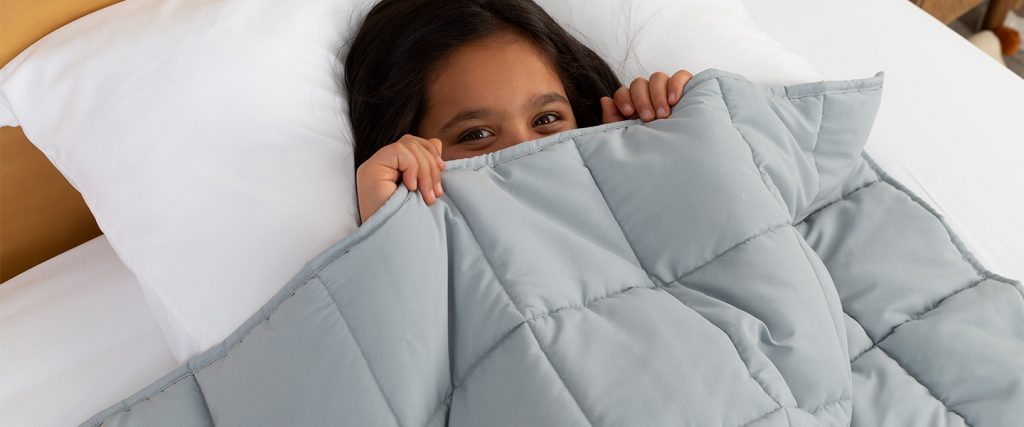
Children under the age of 3 shouldn't be given weighted blankets as they may struggle with manoeuvring them, increasing the risk of suffocation.
Children over the age of 3 generally have the ability to manoeuvre the blankets if necessary. Weighted blankets for children are smaller and lighter, and weight options will come in at around 4 kg.
Speaking with a medical professional about the possibility of a weighted blanket for children is advised as they can let you know whether the benefits will be worth it.
Children with sleep problems, ADHD, or autism spectrum disorder can benefit from weighted blankets to help them fall asleep, relax, and reduce anxiety.
Are weighted blankets suitable for everyone?
While weighted blankets can provide great effects for users with sleep disorders, restless leg syndrome, mental health issues, and many other conditions, they are not suitable for everyone.
It is worth speaking with your doctor if you are pregnant, have low blood pressure, a respiratory disorder like asthma, type 2 diabetes, or obstructive sleep apnea and were planning on getting one.
Final thoughts
With a number of studies proving the benefits of weighted blankets, it is clear that they can be a beneficial addition to improving your general wellbeing. That being said, you must select the right size, filling, and weight to suit your needs.
By following the advice provided, you should be able to invest in a suitably weighted blanket and ensure you enjoy all the benefits possible.
At Sleepseeker, we are sleep experts and have a range of bedding for you to choose from, including duvets and pillows.
What's trending now...
-
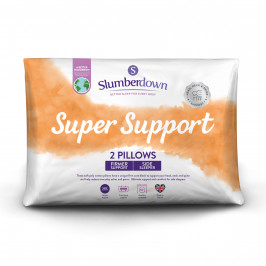
Slumberdown Super Support Firm Support Side Sleeper Pillow, 2 Pack
£17.00
Shop Now -
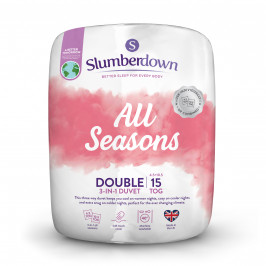
Slumberdown All Seasons Combi 15 Tog (10.5 + 4.5 Tog) Double Duvet
£30.50
Shop Now -
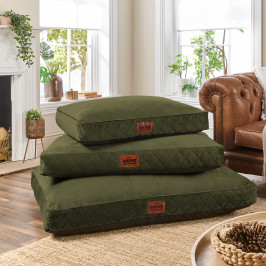
Slumberdown Paws for Slumber Olive Green Pet bed, Medium
£39.00
Shop Now -
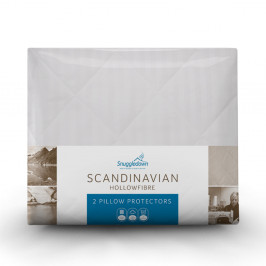
Snuggledown Scandinavian Hollowfibre Pillow Protector - Pack of 2
£15.00
Shop Now -
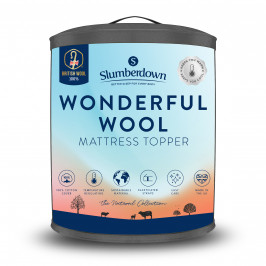
Slumberdown Wonderful Wool Mattress Topper
From: £54.50
Shop Now -
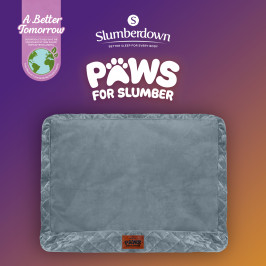
Slumberdown Paws for Slumber Extra Large Pet Bed Spare Cover, Grey
£20.00
Shop Now -
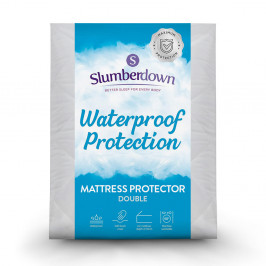
Slumberdown Waterproof Mattress Protector - Double
£17.50
Shop Now -
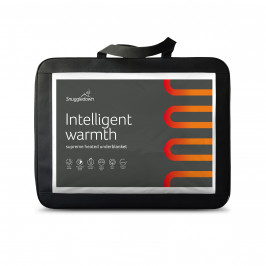
Snuggledown Intelligent Warmth Heated Topper - King
£125.00
Shop Now -
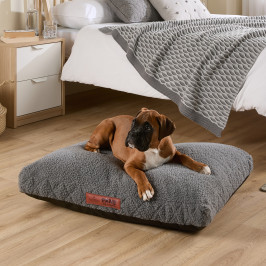
Slumberdown Paws For Slumber Sherpa Pet Bed, Medium
From: £25.00
Shop Now -
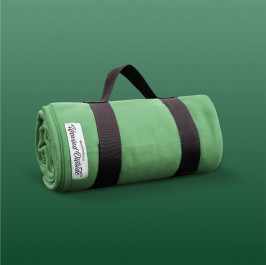
Slumberdown Unwind Outside Endless Lazing Waterproof Blanket, Light Green
£49.00
Shop Now -
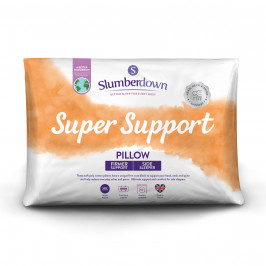
Slumberdown Super Support Firm Support Side Sleeper Pillow
From: £17.00
Shop Now -
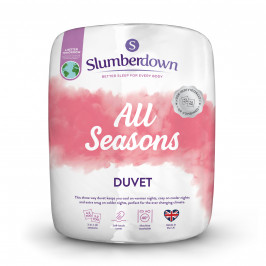
Slumberdown All Seasons Combi Duvet
From: £25.50
Shop Now -
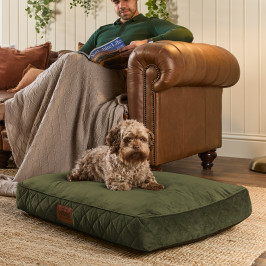
Slumberdown Paws for Slumber Medium Pet Bed
From: £39.00
Shop Now -
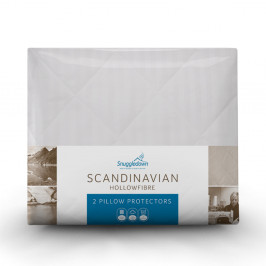
Snuggledown Scandinavian Hollowfibre Pillow Protector
From: £15.00
Shop Now -
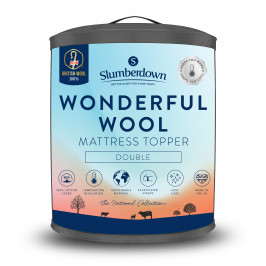
Slumberdown Wonderful Wool Mattress Topper, Double
£54.50
Shop Now -
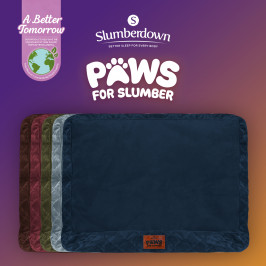
Slumberdown Paws for Slumber Extra Large Pet Bed Spare Cover
From: £20.00
Shop Now -
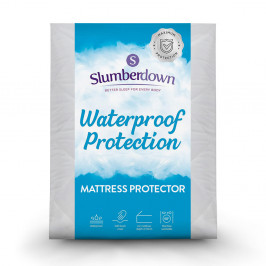
Slumberdown Waterproof Mattress Protector
From: £16.00
Shop Now -
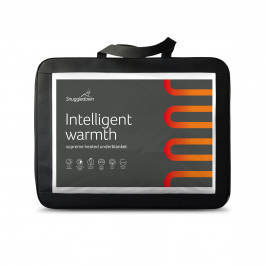
Snuggledown Intelligent Warmth Heated Topper
From: £110.00
Shop Now -
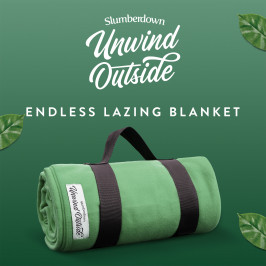
Slumberdown Unwind Outside Endless Lazing Waterproof Blanket
From: £49.00
Shop Now -
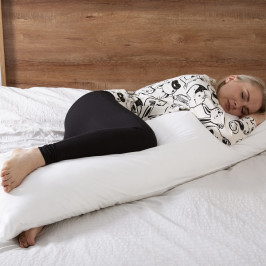
Slumberdown Body Support Pillow, 1 Pack, Includes 100% Cotton Pillow Case
£20.00
Shop Now -
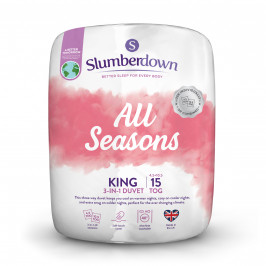
Slumberdown All Seasons Combi 15 Tog (10.5 + 4.5 Tog) King Size Duvet
£34.00
Shop Now


